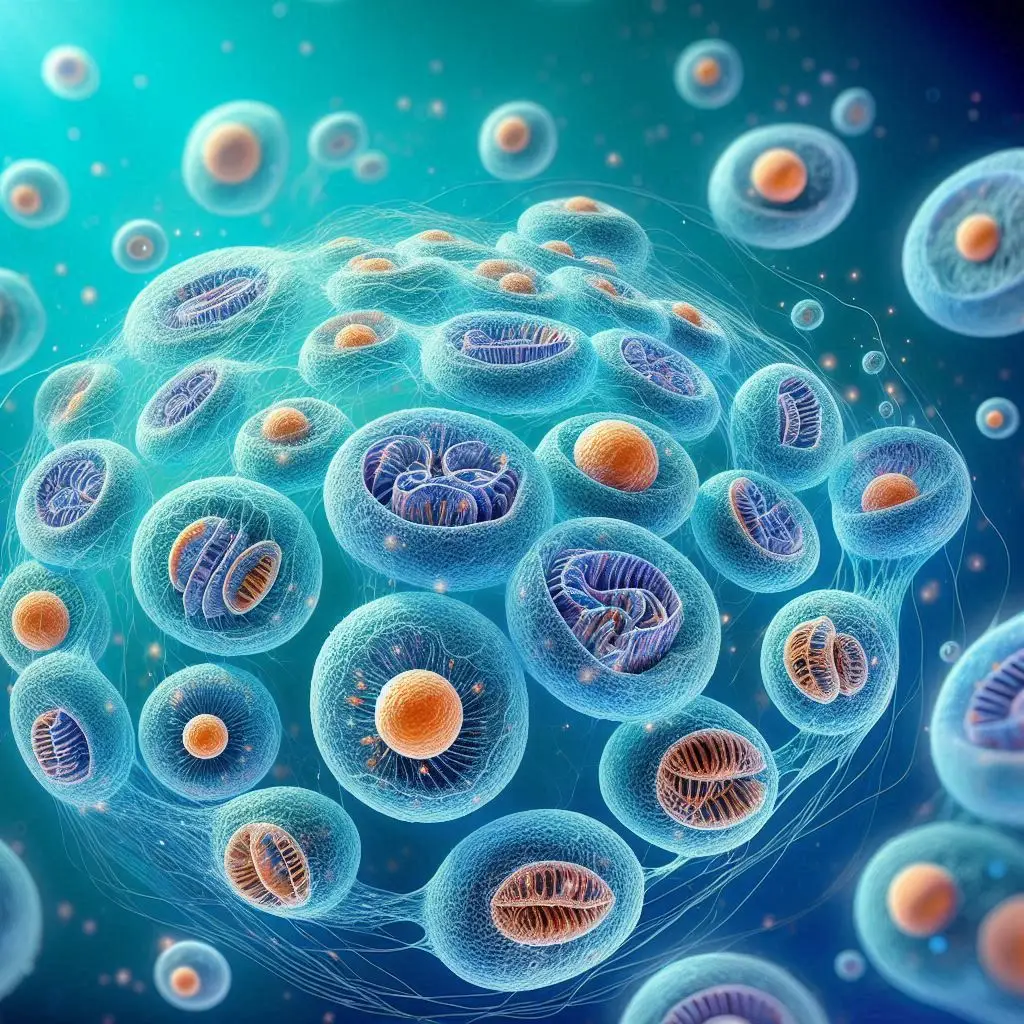Meiosis: Two Cell Divisions

Introduction to Meiosis
Meiosis is a type of cell division that occurs in sexually reproducing organisms. It consists of two sequential divisions: Meiosis I and Meiosis II. Each division has distinct phases, culminating in four genetically diverse haploid cells from a single diploid parent cell. This article will explore the stages of meiosis, its significance, and its role in genetic diversity.
The Importance of Meiosis in Genetic Diversity
Meiosis serves several essential functions in biology:
- Reduction of Chromosome Number: It reduces the chromosome number by half, ensuring that offspring have the correct number of chromosomes when fertilization occurs.
- Genetic Variation: Through processes like crossing over and independent assortment, meiosis introduces genetic variation among gametes.
- Formation of Gametes: It produces haploid cells that develop into sperm or eggs, which are crucial for sexual reproduction.
For a detailed overview of meiosis, you can refer to BYJU’S which explains the stages involved in this process.
Stages of Meiosis
Meiosis can be divided into two main stages: Meiosis I and Meiosis II. Each stage consists of several phases.
Meiosis I: The Reduction Division
Meiosis I is often referred to as the reduction division because it reduces the chromosome number by half. Here are the key phases:
Prophase I
During Prophase I, several important events occur:
- The nuclear envelope disintegrates.
- Chromosomes condense and become visible.
- Homologous chromosomes pair up through a process called synapsis, forming tetrads.
- Crossing over occurs, where segments of DNA are exchanged between homologous chromosomes.
This stage is crucial for increasing genetic diversity. For more information on Prophase I, check out Lumen Learning.
Metaphase I
In Metaphase I:
- Tetrads align at the metaphase plate.
- Spindle fibers attach to the centromeres of each homologous chromosome.
This alignment ensures that each daughter cell will receive one chromosome from each homologous pair.
Anaphase I
During Anaphase I:
- Homologous chromosomes are pulled apart toward opposite poles.
- Sister chromatids remain attached at their centromeres.
This separation is vital for reducing the chromosome number.
Telophase I and Cytokinesis
In Telophase I:
- The nuclear envelope may reform around each set of chromosomes.
- The cell divides into two haploid cells during cytokinesis.
At this point, each daughter cell contains one chromosome from each homologous pair.
Meiosis II: The Equational Division
Meiosis II resembles a typical mitotic division but occurs in haploid cells produced from Meiosis I. Here are the phases:
Prophase II
In Prophase II:
- Chromosomes condense again if they had decondensed during Telophase I.
- A new spindle apparatus forms in each haploid cell.
This prepares the cells for the next division.
Metaphase II
During Metaphase II:
- Chromosomes align at the metaphase plate.
- Spindle fibers attach to the centromeres of sister chromatids.
This alignment ensures proper separation during Anaphase II.
Anaphase II
In Anaphase II:
- Sister chromatids are pulled apart to opposite poles of the cell.
This separation results in four distinct haploid cells at the end of meiosis.
Telophase II and Cytokinesis
In Telophase II:
- Nuclear membranes reform around each set of chromosomes.
- Cytokinesis occurs, resulting in four genetically distinct haploid cells.
These cells can develop into gametes, ready for fertilization. For a visual representation of these stages, you can visit Britannica.
Genetic Diversity Through Meiosis
One of the most significant outcomes of meiosis is genetic diversity. This diversity arises from two main processes:
- Crossing Over: During Prophase I, homologous chromosomes exchange segments of DNA. This process creates new combinations of alleles on each chromosome.
- Independent Assortment: During Metaphase I, homologous chromosomes align randomly at the metaphase plate. This random arrangement leads to different combinations of maternal and paternal chromosomes being distributed to daughter cells.
These mechanisms ensure that offspring inherit a unique mix of genes from their parents. For more details on genetic variation through meiosis, refer to Wikipedia.
Conclusion
Meiosis is a vital process that underpins sexual reproduction and contributes to genetic diversity within populations. By understanding its stages—Meiosis I and Meiosis II—we gain insight into how organisms reproduce and evolve over time. The intricate dance of chromosomes during this process not only ensures proper chromosome numbers but also fosters variation that drives evolution.
For more pearls of Vets Wisdom:
Estimating Sires: Progeny Testing and Threshold Models






Responses